#learn revit software
Explore tagged Tumblr posts
Text
my computer just crashed… with all my unsaved architecture buildings on there…

#revit#autocad#architecture#has anyone else done this#Oh my GODDDDD IM GONNA HAVE TO REDO EVERYTHING I HATE LEARNING NEW SOFTWARES#why did I sign myself up for this#The eye bags are eye bagging
0 notes
Text
Chitimacha
Chitimacha is a Native American language of Louisiana that was spoken until the death of its last two native speakers, Ben (1934) & Delphine (1940), pictured here.


Thankfully, a linguist named Morris Swadesh (pictured) worked with Ben & Delphine to write down 120 Chitimacha stories and create a basic dictionary before they died.


Today, the Chitimacha tribe is revitalizing their language using those archival materials. They’ve created Rosetta Stone language learning software for Chitimacha, have daily language and culture classes in the tribal school, and have put up bilingual English-Chitimacha signs in many places.

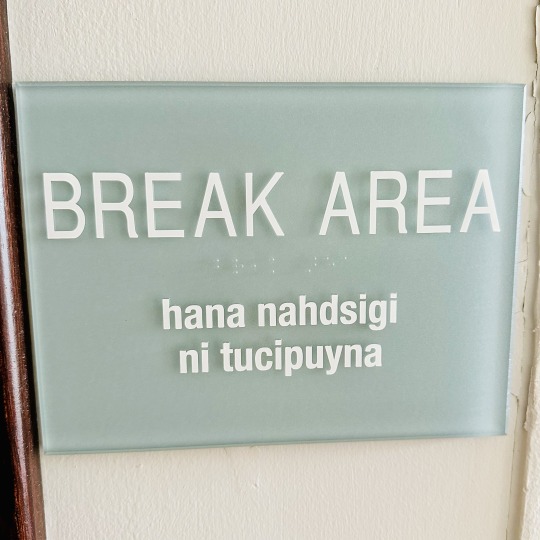

Last week, I visited the Chitimacha reservation to run a workshop for the language teachers. We practiced many different pronunciation and grammar details, but also coined many new words! Here are a few we came up with:
Neymank Waxta ‘Indigenous Peoples Day’ (literally ‘people of the land’s day')
gaspam ‘refrigerator’ (literally ‘thing that causes it to be cold’)
pexpa patsi ‘volleyball’ = pexpa ‘cause to fly’ + patsi ‘ball’
huuta qapx kudihn ‘kayak’ (literally ‘boat closed in on itself’)
Chitimacha has a unique spelling system:
⟨b, d, g, dz, j⟩ are ejective consonants /pʼ, tʼ, kʼ, t͡sʼ, t͡ʃʼ/
⟨q⟩ is a glottal stop /ʔ/
⟨x⟩ is the palato-alveolar fricative /ʃ/
You can read more about the Chitimacha language in my forthcoming book chapter, available here:

446 notes
·
View notes
Text
Important PSA: Do not ask linguists how many languages they speak. Linguistics is the scientific study of language, investigating things such as (but not limited to): how language can be modeled as a complex logic system; the cognitive processes and neurological structures that support the acquisition, storage, and usage of language; the biological and acoustic mechanisms involved in the production/perception of language; how language influences society and how society influences language.
Other things linguists do: work with communities to document or revitalize dying languages; develop dictionaries; work on language modeling software; consult for copyright litigation; reconstruct dead languages.
Really lucky linguists get hired by Hollywood to create fictional languages for sci-fi and fantasy blockbusters.
What linguists do not do: spend all day learning foreign languages. (Alas, if you are a linguist who enjoys learning foreign languages, you must do it in your free time, not during work hours.)
Also! Another important PSA: Any linguist who has learned, like, anything about language, WILL NOT JUDGE YOUR GRAMMAR! Do NOT apologize to a linguist for how you speak. Remember: no dialect is "more correct" than another. There is literally no objective criteria with which you can compare two languages or dialects and decide one is "better" than the other. If you are communicating successfully, you're doing language right!
#linguistics#i don't spend all day learning foreign languages#i spend all day experimenting on infants#hashtag not judging your grammar#just studying how you acquire it#my soapbox
76 notes
·
View notes
Text
How Civil Engineering Courses Are Evolving with New Technology
Civil engineering is no longer just about bricks, cement, and bridges. It has become one of the most future-focused fields today. If you are planning to study civil engineering, you must understand how the course has evolved. The best civil engineering colleges are now offering much more than classroom learning.
You now study with technology, not just about it. And this shift is shaping your career in ways that were never possible before.
Technology is Changing the Civil Engineering Classroom
In the past, civil engineering courses relied on heavy theory and basic field training. Today, you learn through software, simulations, and smart labs. At universities like BBDU in Lucknow, classrooms are powered by tools like AutoCAD, Revit, STAAD Pro, and BIM.
These tools help you visualize structures, test designs, and even simulate natural forces.
You work on 3D modeling tools
You test designs virtually before real-world execution
You understand smart city layouts and green construction methods
This means your learning is hands-on, job-ready, and tech-driven.
You Learn What the Industry Actually Uses
Most construction and infrastructure companies now depend on digital tools to plan, design, and execute projects. This is why modern B.Tech Civil Engineering courses include:
Building Information Modelling (BIM)
Geographic Information Systems (GIS)
Remote Sensing Technology
Drones for land surveying
IoT sensors in smart infrastructure
Courses in colleges like BBDU include these topics in the curriculum. You do not just learn civil engineering. You learn the tools that companies expect you to know from day one.
The future of Civil Engineering is Data-Driven
You might not think of civil engineering as a data-heavy field. But now, big data is used to monitor structural health, traffic flow, and resource planning. Many universities have added data analysis and AI basics to help you understand how smart infrastructure works.
By learning how to handle real-time data from buildings or roads, you become more skilled and more employable.
Real-world exposure is Now Part of the Course
Good civil engineering colleges in Uttar Pradesh understand that you need industry exposure. Colleges like BBDU offer:
Internships with construction firms and government bodies
Industry guest lectures and site visits
Capstone projects linked to real problems
You are not just attending lectures. You are solving real-world construction challenges while still in college.
Why Choose BBDU for Civil Engineering?
In Lucknow, BBDU is one of the few private universities offering a modern civil engineering course with world-class infrastructure. You learn in smart labs, access tools used by top firms, and receive career counseling throughout the program.
Here’s what makes BBDU a smart choice:
Advanced labs and smart classrooms
Training in AutoCAD, STAAD Pro, BIM
Live projects and on-site construction learning
Career cell and placement support
Affordable fees and scholarships for deserving students
Civil Engineering is Still One of the Most Stable Careers
Reports show that India will spend over ₹100 lakh crores on infrastructure in the next few years. Roads, smart cities, renewable power plants, metros – all need civil engineers. And companies prefer students trained in construction technology, digital tools, and real-world planning.
So, if you're thinking about joining a course, look at how it prepares you for tomorrow.
The future of civil engineering is digital, and your education should be too. Choose a program that keeps up with the times. Choose a university that helps you build more than just buildings – it helps you build your future.
Apply now at BBDU – one of the most future-focused civil engineering colleges in Uttar Pradesh.
2 notes
·
View notes
Text
The Limbo of Advanced Users and Amateur Developers in Microsoft 365
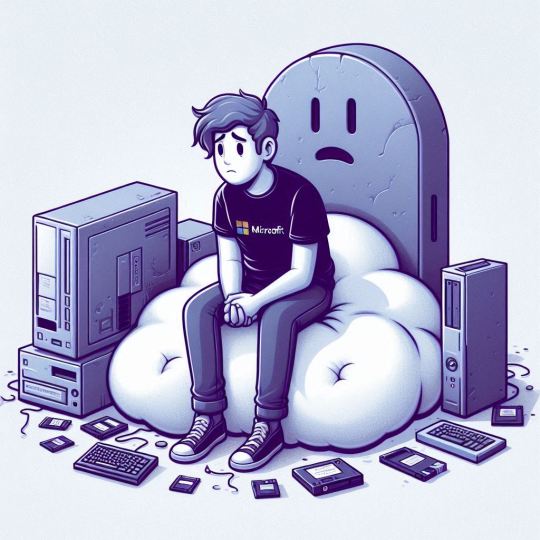
Microsoft 365, the successor to the iconic Office suite, has transformed how millions of people work, collaborate, and manage their daily tasks. However, this transformation has not been equal for everyone. While businesses and corporations have access to a myriad of powerful tools through robust subscriptions, advanced users — those enthusiasts who have historically driven innovation through customization and automation — are left in limbo. This article argues that Microsoft, by prioritizing service-based and enterprise-focused models, has abandoned beginner developers and advanced users, once the cornerstone of its tools’ success.
The Golden Age of Customization
In the past, Microsoft Office allowed rich customization and automation through Visual Basic for Applications (VBA) and integration with technologies like COM (Component Object Model). These features enabled individuals, even without corporate tools, to create scripts to automate tasks, customize interfaces, and connect applications in innovative ways. With VBA, a user could generate automated reports in Excel or build macros to streamline repetitive processes in Word. This turned Office into not only a productivity tool but also a learning platform for budding developers.
However, with the migration to Microsoft 365, this flexibility has been significantly reduced. VBA remains available in a limited capacity, but its usage is increasingly marginalized, and many new features of Microsoft 365 are inaccessible through it. Furthermore, VBA has no support in the web environment, which is becoming increasingly central to modern workflows.
A Service, Not a Tool
Microsoft 365 represents a fundamental shift: from locally installed software to a cloud-based service. While this approach offers benefits like real-time collaboration and automatic updates, it has severely limited advanced users. Local automation has taken a back seat, and the focus has shifted to tools like Power Automate — a powerful platform, but largely inaccessible to personal users.
Power Automate is clearly designed for the corporate environment. Many of its most compelling features are locked behind business-specific subscriptions, leaving individual users without practical alternatives. For users seeking advanced and customized solutions, Microsoft 365 is no longer a viable option.
Apple’s Counterpoint
While Microsoft appears to be moving away from advanced users, Apple is taking the opposite direction. Tools like Shortcuts, AppleScript, and Automator make Apple’s applications highly customizable, even for personal users. Tasks can be automated in Pages, Numbers, Reminders, and Calendar without relying on corporate services. This approach not only empowers users but also fosters curiosity and learning among new developers.
This contrast highlights the central issue: Apple values tech enthusiasts and amateur developers, while Microsoft seems to have relegated them to a secondary role, if not excluded them entirely.
The Impact on the Future of Technology
Microsoft’s abandonment of advanced users has broader implications beyond daily workflows. For many developers, tools like VBA served as an entry point to programming. Removing these opportunities makes practical learning more difficult and stifles grassroots innovation. At a time when the market needs more developers and creative thinkers, this decision is particularly troubling.
Moreover, this exclusion risks alienating a community that has historically been crucial to Office’s success. Advanced users are often technology “evangelists” within their circles, promoting tools and influencing purchasing decisions. Ignoring them poses a significant strategic risk for Microsoft.
Conclusion: What Should Microsoft Do?
If Microsoft wants to regain the trust and engagement of advanced users, several actions are essential:
1. Revitalize VBA and Similar Technologies: Ensure that local automations are not only supported but encouraged, including integration with new Microsoft 365 features.
2. Expand Access to Power Automate: Offer more platform functionalities to individual users without requiring corporate subscriptions.
3. Acknowledge the Value of Advanced Users: Develop tools and initiatives aimed at educating and empowering amateur developers and tech enthusiasts.
In a world increasingly dominated by cloud-based services, striking a balance between innovation and accessibility is crucial. Microsoft has an opportunity to correct its course and reaffirm its commitment to the community that helped it succeed. If it fails to do so, it risks losing a vital segment of its user base to more inclusive alternatives.
6 notes
·
View notes
Text
Scope Computers
🏛️ "Step into the world of architectural brilliance with our Architectural Assistance Training! Learn the essential skills to support architects in creating stunning designs, managing projects, and mastering advanced software tools like AutoCAD, SketchUp, and Revit. Whether you're just starting or looking to enhance your expertise, our hands-on training will equip you with the knowledge and practical experience needed to thrive in architecture. Build your future with a career that shapes skylines!" ✨

#architecture#archi#architectural#luxurydesign#stone#jodhur#india#architecturaldesign#designinspiration#designing#artwork#customhome#home#design#building#stairs#staircasedesign#featurestairs#metaldesign
2 notes
·
View notes
Text
Revit Architecture Online Training - cubikcadd

Revit Architecture Online Training - cubikcadd
In today’s fast-paced design and architecture world, staying ahead of the curve requires mastering the right tools. One of the most powerful and widely used software platforms for architects, engineers, and construction professionals is Autodesk Revit. If you’re serious about elevating your skills and advancing your career, enrolling in a Revit course can be a game-changer. This blog will explore the benefits of taking a Revit course, what you can expect to learn, and why it's essential for anyone in the design industry.
What Is Revit?
Revit is a Building Information Modeling (BIM) software developed by Autodesk that allows architects, engineers, and construction professionals to design, visualize, and manage building projects in a 3D environment. Unlike traditional CAD software, Revit is more than just a drawing tool. It enables users to create intelligent models with real-world information about materials, structures, and systems, providing a holistic approach to design and construction.
Why Take a Revit Course?
A Revit course is crucial for professionals who want to maximize their productivity and accuracy in design. Here are a few key reasons why learning Revit is a smart investment in your future:
1. Industry Standard
Revit is an industry-standard BIM software widely used in architectural firms, engineering companies, and construction projects worldwide. Employers often seek professionals proficient in Revit, making it a valuable skill on your resume.
2. Improve Design Efficiency
Revit allows you to work smarter, not harder. By learning how to use the software’s advanced features, such as parametric modeling and automatic updates across the project, you can significantly reduce the time spent on revisions and manual updates.
3. Enhance Collaboration
Revit supports team collaboration with ease. A Revit course will teach you how to work with cloud-based models, enabling multiple users to access, modify, and update a single project file in real-time. This is especially important in large projects where coordination between different disciplines (architecture, structural engineering, MEP) is crucial.
4. Create Detailed 3D Visualizations
One of the standout features of Revit is its ability to generate highly detailed 3D models and visualizations. By enrolling in a Revit course, you’ll learn how to create photorealistic renders, walkthroughs, and simulations, helping you and your clients better understand the design before construction even begins.
5. Better Project Management
Revit’s intelligent data system ensures that every part of your model is interconnected. This allows for accurate cost estimates, material takeoffs, and construction timelines. A Revit course will show you how to use these tools to improve project management, ensuring projects stay on time and within budget.
What Will You Learn in a Revit Course?
From basic to advanced, a well-designed Revit course usually covers a wide range of topics. The following summarises what you can anticipate learning:
1. Introduction to BIM and Revit Interface
You’ll start by getting familiar with BIM concepts and the Revit interface. This includes learning about tools, menus, and how to navigate the software efficiently.
2. Modeling Techniques
The course will teach you how to create accurate architectural models, including walls, floors, roofs, doors, and windows. You’ll also learn how to model structural components and MEP systems, depending on the course's focus.
3. Documentation and Annotations
Learn how to generate construction documentation, such as floor plans, sections, elevations, and details. You’ll also cover how to annotate your drawings with dimensions, text, and other symbols necessary for clear communication with contractors and clients.
4. Advanced Modeling and Customization
Once you master the basics, you’ll dive into more advanced topics such as custom family creation, curtain wall systems, complex roofs, and parametric design, which allows you to create flexible models.
ph : +91-9500024134
Visit our website: https://www.cubikcadd.in/revit-training-in-coimbatore.html
Ramnagar Branch, Coimbatore : https://maps.app.goo.gl/boAyupUoqtda9fXU6
Saravanampatti Branch, Coimbatore : https://maps.app.goo.gl/xrtknmSk76d8cnQV9
OMR Branch, Chennai : https://maps.app.goo.gl/HCpHhcFHGdKsPCPx7
Facebook: https://www.facebook.com/cubikcadd
Instagram: https://www.instagram.com/cubikcadd/
Tiwtter: https://x.com/CubikCadd
2 notes
·
View notes
Text

BIM Careers: Building Your Future in the Digital AEC Arena
The construction industry is undergoing a digital revolution, and BIM (Building Information Modeling) is at the forefront. It's no longer just a fancy 3D modeling tool; BIM is a collaborative platform that integrates data-rich models with workflows across the entire building lifecycle. This translates to exciting career opportunities for those who can harness the power of BIM.
Are you ready to step into the octagon of the digital construction arena? (Yes, we're keeping the fighting metaphor alive!) Here's a breakdown of the in-demand skills, salary ranges, and future prospects for BIM professionals:
The In-Demand Skillset: Your BIM Arsenal
Think of your BIM skills as your tools in the digital construction toolbox. Here are the top weapons you'll need:
BIM Software Proficiency: Mastering software like Revit, ArchiCAD, or Navisworks is crucial. Understanding their functionalities allows you to create, manipulate, and analyze BIM models.
Building Science Fundamentals: A solid grasp of architectural, structural, and MEP (mechanical, electrical, and plumbing) principles is essential for creating BIM models that reflect real-world construction realities.
Collaboration & Communication: BIM thrives on teamwork. The ability to collaborate effectively with architects, engineers, and other stakeholders is paramount.
Data Management & Analysis: BIM models are data-rich. Being adept at data extraction, analysis, and interpretation unlocks the true potential of BIM for informed decision-making.
Problem-Solving & Critical Thinking: BIM projects are complex. The ability to identify and solve problems creatively, while thinking critically about the design and construction process, is invaluable.
Salary Showdown: The BIM Payday Punch
Now, let's talk about the real knock-out factor – salaries! According to Indeed, BIM professionals in the US can expect an average annual salary of around $85,000. This number can vary depending on experience, location, and specific BIM expertise. Entry-level BIM roles might start around $60,000, while BIM Managers and BIM Specialists with extensive experience can command salaries exceeding $100,000.
Future Forecast: A Bright BIM Horizon
The future of BIM is bright. The global BIM market is projected to reach a staggering $8.8 billion by 2025 (Grand View Research). This translates to a continuous rise in demand for skilled BIM professionals. Here are some exciting trends shaping the future of BIM careers:
BIM for Specialty Trades: BIM is no longer just for architects and engineers. We'll see increased adoption by specialty trades like HVAC technicians and fire protection specialists.
Integration with AI and Machine Learning: Imagine BIM models that can predict potential issues or suggest optimal design solutions. AI and machine learning will revolutionize BIM capabilities.
VR and AR for Enhanced Collaboration: Virtual Reality (VR) and Augmented Reality (AR) will allow for immersive BIM model walkthroughs, facilitating better collaboration and design communication.
Ready to Join the BIM Revolution?
The BIM landscape offers a dynamic and rewarding career path for those with the right skills. If you're passionate about technology, construction, and shaping the future of the built environment, then BIM might be your perfect career match. So, hone your skills, embrace the digital revolution, and step into the exciting world of BIM with Capstone Engineering!
#tumblr blogs#bim#careers#buildings#bim consulting services#bim consultants#construction#aec#architecture#3d modeling#bim coordination#consulting#3d model#bimclashdetectionservices#engineering#MEP engineers#building information modeling#oil and gas#manufacturing#virtual reality#collaboration#bim services#uaejobs
2 notes
·
View notes
Text
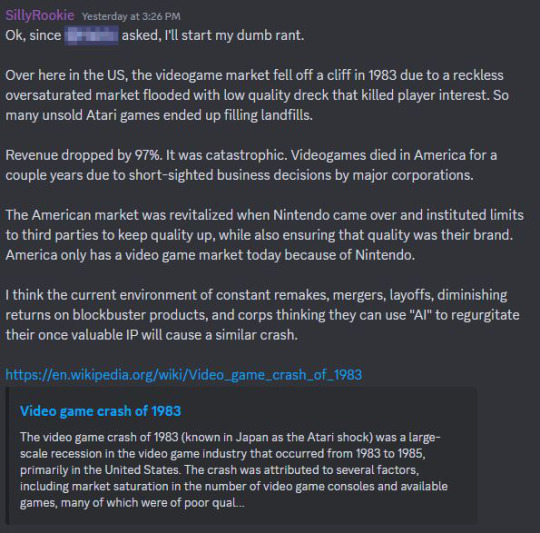







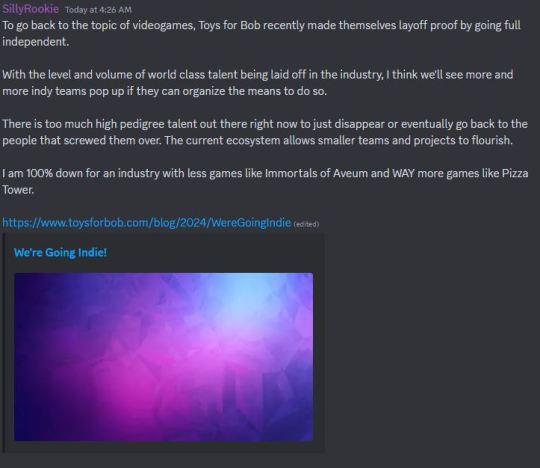
For those who can't see the screenshot post, for whatever reason it may be:
@sillyrookie posted:
Ok, since @hairiclilred asked, I'll start my dumb rant.
Over here in the US, the videogame market fell off a cliff in 1983 due to a reckless oversaturated market flooded with low quality dreck that killed player interest. So many unsold Atari games ended up filling landfills.
Revenue dropped by 97%. It was catastrophic. Videogames died in America for a couple years due to short-sighted business decisions by major corporations.
The American market was revitalized when Nintendo came over and instituted limits to third parties to keep quality up, while also ensuring that quality was their brand. America only has a video game market today because of Nintendo.
I think the current environment of constant remakes, mergers, layoffs, diminishing returns on blockbuster products, and corps thinking they can use "AI" to regurgitate their once valuable IP will cause a similar crash.
What I find interesting is how many classic IP will end up dying in the wake of this.
At the moment so many distinguished studios with established IP are getting bought up by corps, only to lay off the workers and shutter the studios.
The workers don't just lose their jobs, they lose the IP they created. Even if the team can regroup, they can't use the stuff they made anymore. The IP dies with the studio.
So stuff like this makes me feel like we're right at the brink of a collapse that will kill ALOT of once profitable IP when audiences are made sick and tired of alot of stuff they used to love.
These IP owners don't understand the products they own, the workers that make it, and the audience that buy it; and many in the c-suite have actual contempt for all three things.
When an IP stops being profitable, corps shut it down, lock it away unless somebody has the capital to buy it from them.
The only thing they understand is that an old movie made by humans generated billions of profits for them because an audience enjoyed it, and instead of taking new risks it's "better" business short term to just rehash the stuff that made money before. And if they expect "generative AI" to make more content even faster, expect a sea of endless remakes, each shittier than the last one.
Things are bad now, and they're gonna get way worse real fast.
I expect a cultural massacre. What does that look like?
It's obviously a different world today than the 1980s, but Nintendo's core business ideology has stayed consistent, and they'll weather a AAA crash with no problem because they don't play the AAA space at all.
They make a sustainable lower-tech console that's sold at a profit (the traditional model before the Wii was to make a powerful console and sell it at a loss so that you made your money on software sales) and their brand still means quality even 40 years later. Not every game they do is amazing, but their batting average is high and they go out of their way to avoid dropping anything half-baked.
I think every other industry is gonna need their own Nintendos to rise from the ashes. The more I learned about the history of the industry, the more respect I have for them.
And they are NOT perfect. But it the broad strokes they're the example I think most should follow to have a sustainable industry that keeps everyone happy.
Heck, I'll define "everyone happy:"
Artists properly paid, having job security, and able to BE creative.
Players having quality games to enjoy.
Businesses being sustainable for the long term, properly using the revenue from successes to experiment with new ideas, and not screwing anyone over.
[Image: Sonic saying "I WANT SHORTER GAMES WITH WORSE GRAPHICS MADE BY PEOPLE WHO ARE PAID MORE TO WORK LESS AND I'M NOT KIDDING".]
If the collapse I'm imagining does actually happen, the only possible thing to grow out of it are new IP from all the artists that got laid off.
New stuff would be the only things coming out for a while and the only things people want if the big franchises burned them out.
Depending on how audience sentiment is by that point, public domain stuff might become suspect as well, which is also an interesting scenario to me.
I think about how the current remake ecosystem is targeted at millennials (which I am) while the pendulum is already set to swing in the other direction.
Sorry for not talking about this part first. 😂
74% of that survey wants new stuff. The major IP holders are about to commit suicide if they go through with the "AI will make us 30 remakes per second" scheme.
One thing I hope DOESN'T happen is a backlash against honesty in the creative process.
We were culturally at a point where the average joe could understand that new ideas don't come from nowhere and are all mutations of old ideas.
Game of Thrones exists because Lord of the Rings came first, which owes it's existence to Norse myth and Beowulf, ect ect.
We're at the point where youtubers make games out of seeing what a song sampled from, the references a movie made, on and on.
But right now a popular spiel from "AI" charlatans to justify IP theft is the assertion that there's no difference between stealing copyrighted media for an LLM to regurgitate and a human being inspired by the ideas and experience they felt from another creator's work and creating a new thing under the established rules of copyright. It's a lie, but it keeps getting repeated to justify theft.
As the scam cycle winds down, I think they might be poisoning the discourse in a lasting way. We could go back to people lying about how ideas work, and that has only negative effects on human expression as a whole.
I want a world where everyone understands the difference between inspiration and a ripoff and can appreciate human creation better than previous generations have. We were right there before the scammers showed up.
So yeah, another rant out of me. 😂
So when people want new IP, they also need to understand what it means that Dragonball was a goofy parody of Journey to the West.
Dragonball is alot of things, it's inspirations are loud and obvious (even the Terminator is in there), but it's also a unique work created through the mind of one talented individual that nobody else could have made, because nobody else was Akira Toriyama, and ALL the subsequent works inspired by Dragonball (One Piece, Naruto, Hero Academia, Sonic the Hedgehog, ect) are their own original works that stand on their own, but still owe their existence to Toriyama's work as much as he owes his work to the things that inspired him.
The best ecosystem is where everyone encourages new IP and also fully understands how they come into being.
(Using this example for obvious reasons.)
Discord Post Reaction: [☝️ 1]
To go back to the topic of videogames, Toys for Bob recently made themselves layoff proof by going full independent.
With the level and volume of world class talent being laid off in the industry, I think we'll see more and more indy teams pop up if they can organize the means to do so.
There is too much high pedigree talent out there right now to just disappear or eventually go back to the people that screwed them over. The current ecosystem allows smaller teams and projects to flourish.
I am 100% down for an industry with less games like Immortals of Aveum and WAY more games like Pizza Tower.
5 notes
·
View notes
Text
Understanding Language Translation and Translation Work at Speaknahuatl: Spanish, English and Nahuatl
What is language translation?
Language translation is the act of changing written words from one language to another language using different computer-assisted tools like translation memory. Translators have the ability to examine text or other written documents to make sure it is an accurate translation. Translators focus on written works like blogs, news articles, websites, etc.
What is language translation?
Language translation is like transforming words on paper, website, medical document, etc. from one language to another. For example, let’s say a Spanish speaker received a medical letter in English. This is where a translator can help by changing all the words to Spanish. This work may involve using software, cross-referencing other documents and referencing multiple dictionaries to make sure the translation is correct.
What are our mother tongues and dialects, as well as those we've acquired through learning?
Nahuatl (Multidialectal including Huasteca, Classical, Central and Western)
Spanish (Dialect: Mexican, Northwestern/Bajacaliforniense)
English (Dialect: American, California)
Mexican Spanglish (Borderland: Southern California/Northern Baja)
What languages do we translate?
Nahuatl
Spanish
English
Mexican Spanglish
What is the rate per word?
The cost is 30 cents (USD) for each word.
How can you request a written language translation?
Send us an email to [[email protected]] with following:
1) What language(s) do you want us to translate this text to?
2) Provide us with the word(s), sentence(s) or paragraph(s) you'd like us to translate
3) Due date: when do you require this translation to be completed?
What happens after this?
4) Donation options will be provided via email
5) Once donation is received, the translation will be sent by the due date in PDF format
What We Do
We are a collective of language workers: learners and teachers. We work in language revitalization projects and offer trilingual translation services: Nahuatl, English & Spanish. To stay up-to-date with our offerings, please go here: https://linktr.ee/speaknahuatl.
Form Version: https://tiny.one/tlajtolkuepa
IG Version: https://www.instagram.com/p/C5B4QhPBynT
2 notes
·
View notes
Text
Revolutionizing the Digital Landscape: Technoviaan Software's Comprehensive IT Services
In the ever-evolving digital landscape, businesses require innovative solutions to stay ahead of the curve. Introducing Technoviaan Software, a trailblazer in the realm of Information Technology services. With a profound expertise spanning across various cutting-edge technologies, Technoviaan Software stands as a beacon of excellence, offering unparalleled services tailored to meet the diverse needs of modern businesses.Empowering Businesses with Technological BrillianceAt Technoviaan Software, we understand the pivotal role technology plays in shaping the success of businesses in today's competitive environment. Leveraging our expertise in a multitude of technologies, we offer comprehensive IT services designed to empower businesses across various domains.Expertise in Key Technologies.NET Development: Our skilled team of developers excels in crafting robust and scalable solutions using the .NET framework. Whether it's building dynamic web applications or enterprise-level software, we ensure unparalleled performance and reliability.Java Development: With a deep-rooted understanding of Java technology, we deliver tailored solutions that drive business growth. From enterprise application development to Java-based web solutions, our expertise knows no bounds.PHP Development: Technoviaan Software pioneers in PHP development, delivering high-performance websites and applications that resonate with your audience. Our proficiency in PHP frameworks like Laravel ensures swift development cycles and exceptional results.Python Development: Python's versatility is at the core of our development philosophy. Our Python experts harness the power of this language to create data-driven solutions, machine learning algorithms, and automation scripts that propel businesses forward.Digital Marketing: In the digital realm, visibility is paramount. Technoviaan Software offers bespoke digital marketing solutions tailored to amplify your online presence. From SEO strategies to targeted PPC campaigns, we deploy tactics that drive tangible results and maximize ROI.Blockchain Development: Embrace the future of technology with our blockchain development services. Whether it's implementing smart contracts, building decentralized applications, or exploring cryptocurrency solutions, Technoviaan Software is your trusted partner in blockchain innovation.Unmatched Commitment to ExcellenceWhat sets Technoviaan Software apart is our unwavering commitment to excellence. We strive to understand the unique requirements of each client and deliver solutions that exceed expectations. With a customer-centric approach and a penchant for innovation, we forge long-lasting partnerships built on trust and mutual success.Experience the Technoviaan AdvantageIn a world where technology reigns supreme, Technoviaan Software emerges as a beacon of innovation and expertise. Whether you're a startup venturing into uncharted territories or an established enterprise seeking to revitalize your digital presence, we have the tools, the talent, and the tenacity to propel you towards success.Experience the Technoviaan advantage today and embark on a journey of digital transformation like never before. Your success is our mission, and together, we'll shape a future fueled by technological brilliance.Connect with us today and unlock the limitless possibilities of technology with Technoviaan Software.
#it services#software developers#software development#software services#software solutions#.net development#phpdevelopment#flutter app development#web development#it staffing services#technology#ios app development#android app development#Software
3 notes
·
View notes
Text
Building technology that empowers city residents
New Post has been published on https://thedigitalinsider.com/building-technology-that-empowers-city-residents/
Building technology that empowers city residents


Kwesi Afrifa came to MIT from his hometown of Accra, Ghana, in 2020 to pursue an interdisciplinary major in urban planning and computer science. Growing up amid the many moving parts of a large, densely populated city, he had often observed aspects of urban life that could be made more efficient. He decided to apply his interest in computing and coding to address these problems by creating software tools for city planners.
Now a senior, Afrifa works at the City Form Lab led by Andres Sevstuk, collaborating on an open-source, Python-based tool that allows researchers and policymakers to analyze pedestrians’ behaviors. The package, which launches next month, will make it more feasible for researchers and city planners to investigate how changes to a city’s structural characteristics impact walkability and the pedestrian experience.
During his first two years at MIT, Afrifa worked in the Civic Data Design Lab led by Associate Professor Sarah Williams, where he helped build sensing tools and created an online portal for people living in Kibera, Nairobi, to access the internet and participate in survey research.
After graduation, he will go on to work as a software engineer at a startup in New York. After several years, he hopes to start his own company, building urban data tools for integration into mapping and location-based software applications.
“I see it as my duty to make city systems more efficient, deepen the connection between residents and their communities, and make existing in them better for everyone, including groups which have often been marginalized,” he says.
“Cities are special places”
Afrifa believes that in urban settings, technology has a unique power to both accelerate development and empower citizens.
He witnessed such unifying power in high school, when he created the website ghanabills.com, which aggregated bills of parliament in Ghana, providing easy access to this information as well as a place for people to engage in discussion on the bills. He describes the effect of this technology as a “democratizing force.”
Afrifa also explored the connection between cities and community as an executive member of Code for Good, a program that connects MIT students interested in software with nonprofits throughout the Boston area. He served as a mentor for students and worked on finding nonprofits to match them up with.
Language and visibility
Sharing African languages and cultures is also important to Afrifa. In his first two years at MIT, he and other African students across the country started the Mandla app, which he describes as a Duolingo for African languages. It had gamified lessons, voice translations, and other interactive features for learning. “We wanted to solve the problem of language revitalization and bring African languages to the broader diaspora,” he says. At its peak a year ago, the app had 50,000 daily active users.
Although the Mandla App was discontinued due to lack of funding, Afrifa has found other ways to promote African culture at MIT. He is currently collaborating with architecture graduate students TJ Bayowa and Courage Kpodo on a “A Tale of Two Coasts,” an upcoming short film and multimedia installation that delves into the intricate connections between perceptions of African art and identity spanning two coasts of the Atlantic Ocean. This ongoing collaboration, which Afrifa says is still taking shape, is something he hopes to expand beyond MIT.
Discovering arts
As a child, Afrifa enjoyed writing poetry. Growing up with parents who loved literature, Afrifa was encouraged to become involved with the theater and art scene of Accra. He didn’t expect to continue this interest at MIT, but then he discovered the Black Theater Guild (BTG).
The theater group had been active at MIT from the 1990s to around 2005. It was revived by Afrifa in his sophomore year when Professor Jay Scheib, head of Music and Theater Arts at MIT, encouraged him to write, direct, and produce more of his work after his final project for 21M.710 (Script Analysis), a dramaturgy class taught by Scheib.
Since then, the BTG has held two productions in the past two years: “Nkrumah’s Last Day,” in spring 2022, and “Shooting the Sheriff,” in spring 2023, both of which were written and directed by Afrifa. “It’s been very rewarding to conceptualize ideas, write stories and have this amazing community of people come together and produce it,” he says.
When asked if he will continue to pursue theater post-grad, Afrifa says: “That’s 100 percent the goal.”
#000#2022#2023#Africa#amazing#Analysis#app#applications#architecture#Art#Arts#Atlantic ocean#Building#cities#code#Code for Good#coding#Collaboration#Community#computer#Computer Science#Computer science and technology#computing#data#Design#development#easy#Electrical Engineering&Computer Science (eecs)#Engineer#Features
5 notes
·
View notes
Text
Bim Training Institute in Pune: Elevating Your Career in Building Design
A top Bim Training Institute in Pune offers comprehensive courses that cover all aspects of BIM, including 3D modeling, clash detection, project management, and collaboration techniques. These institutes provide hands-on training with industry-standard software like Revit, Navisworks, and ArchiCAD, equipping students with practical skills that are highly valued in the construction sector. With the construction industry increasingly shifting towards digital workflows, professionals skilled in BIM are in high demand, making this training essential for career advancement.
Moreover, a good BIM training institute in Pune not only focuses on technical skills but also emphasizes real-world application through project-based learning, internships, and certification programs. Such institutes often collaborate with leading architecture, engineering, and construction firms, providing students with networking opportunities and industry insights. Graduates from these programs often find themselves better positioned to secure lucrative roles in design firms, construction companies, and infrastructure projects across Pune and beyond.
Plastic Domain Training Institute in Pune
In addition to the BIM domain, Pune also hosts specialized training institutes in the Plastic domain. Plastic manufacturing, processing, and product design are crucial sectors in the city’s industrial landscape. A dedicated Plastic domain training institute in Pune provides courses that cover plastic injection molding, extrusion, blow molding, and material properties. These programs are designed for students and professionals looking to deepen their understanding of plastics technology, quality control, and innovation in plastic products.
Such institutes focus on practical skill development, often offering workshops on CAD for plastic product design, mold design, and testing procedures. As industries like packaging, automotive, healthcare, and consumer goods heavily rely on plastics, expertise in this domain opens various career opportunities. Graduates can work as plastic process engineers, quality analysts, or product designers, contributing to Pune's expanding manufacturing ecosystem.
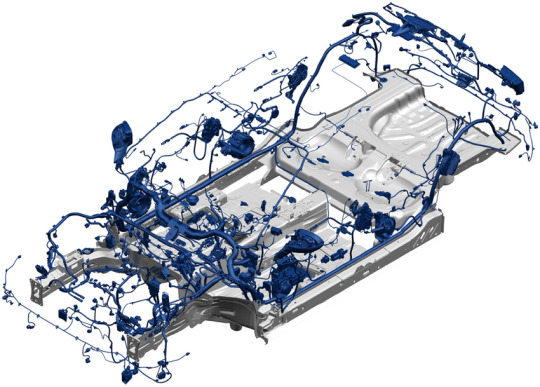
Choosing a reputable plastic training institute in Pune ensures that students receive industry-relevant knowledge, access to state-of-the-art equipment, and mentorship from experienced instructors. This targeted training helps bridge the gap between theoretical understanding and practical application, preparing students to meet industry standards and innovate within the plastic domain.
Mechanical CAD Training in Pune & CAD Interior Design
For students inclined towards design and engineering, Mechanical CAD Training in Pune is an ideal pathway. Mechanical CAD (Computer-Aided Design) involves drafting, modeling, and simulation of mechanical components and systems. Institutes offering specialized Mechanical CAD training focus on popular software like SolidWorks, AutoCAD, Creo, and CATIA. These courses empower students to create detailed 3D models, perform simulations, and prepare manufacturing drawings, essential skills in mechanical engineering and product design.
Additionally, the field of CAD interior design has gained significant popularity, especially in Pune’s booming real estate and hospitality sectors. CAD interior design courses teach students how to utilize software such as AutoCAD, SketchUp, and 3ds Max to create detailed interior layouts, visualizations, and renderings. These programs are tailored for aspiring interior designers, architects, and decorators who wish to translate their creative ideas into precise digital models.
Both these training areas—Mechanical CAD and CAD interior design—offer excellent career prospects. Mechanical CAD professionals find roles in manufacturing, automotive, aerospace, and industrial design sectors, while CAD interior designers are in demand within architecture firms, interior design studios, and construction companies. The key to success in these fields lies in choosing a reputed training institute that provides comprehensive coursework, practical exposure, and industry mentorship.
Conclusion
In summary, Pune offers a multitude of training opportunities for aspiring professionals in the domains of BIM, plastics, mechanical CAD, and interior design. Whether you aim to excel in Bim Training Institute in Pune, specialize in Plastic domain training institute in Pune, or pursue Mechanical CAD Training in Pune with a focus on cad interior design, there are institutes tailored to meet your career goals. Ensuring you select a reputed institute with industry connections and hands-on learning will significantly boost your employability and skillset.
0 notes
Text
How to Choose the Best Architecture College After 12th
Architecture is a career that blends creativity, technology, and real-world problem-solving. Choosing the right college is your first big step if you’re planning to pursue B.Arch after 12th. A good college shapes your ideas, teaches you how to think like a designer, and prepares you for a professional career.
Here is a clear guide to help you choose the best architecture college.
Check the College’s Accreditation and Affiliation
The first thing you should look for is whether the college is approved by the Council of Architecture (CoA). Without CoA recognition, your B.Arch degree will not be valid. Also, ensure the college is affiliated with a reputed university.
BBDU's B.Arch course is CoA-approved and part of a full-fledged university offering multidisciplinary exposure. This builds your credibility and future scope.
Explore Studio and Lab Infrastructure
Architecture is not just about classroom theory. You must spend time in design studios, model-making labs, and digital labs. Choose a college that provides:
Dedicated design studios for each year
Digital labs with tools like AutoCAD, Revit, SketchUp
Model-making workshops
Materials museum and exhibition areas
Site visit and field study integration
This is where B. Arch colleges in Lucknow like BBDU stand out by offering hands-on learning experiences from the very first year.
Faculty, Mentorship, and Industry Exposure
The best learning happens under good mentors. Faculty should include experienced architects, urban planners, and professionals from the design world. Look for colleges that offer:
Guidance from practicing architects
Guest lectures and design critics
Professional mentorship for final-year projects
Portfolio development support
At BBDU, students receive expert mentorship and exposure through real-world projects and expert sessions with architects and urban designers.
Practical Learning and Design Exposure
Architecture is about solving problems through design. Colleges must focus on:
Design thinking and problem-solving
Live projects and real client briefs
Urban and rural field visits
Software training and certification
Competitions, fests, and exhibitions
These activities give you confidence and creative freedom. Among architecture colleges in Lucknow, BBDU offers a balanced mix of practical design studio work and academic strength.
Affordability and Long-Term Value
Understanding the cost of your education is important. When checking B.Arch colleges, look for a balance between course quality and fee structure. Consider:
Infrastructure and facilities provided
Scholarships or financial aid options
Placement assistance and future career guidance
At BBDU, the B.Arch course offers affordable fees along with a full learning ecosystem. Students also get support for higher studies and career planning.
Why BBDU is a Smart Choice for Architecture Students
Babu Banarasi Das University in Lucknow is known for its focus on future-ready education and hands-on learning. The B.Arch program here helps students think like architects, not just design buildings.
Here is what you get:
CoA-approved course structure
Experienced faculty and visiting architects
Fully equipped design labs and model studios
On-campus events, exhibitions, and site visits
Career support and mentorship for architecture students
Affordable fee structure with scholarship options
Conclusion
Choosing the right college is your first step toward a successful career in architecture. Look beyond brochures and rankings. Focus on what matters, learning, exposure, mentorship, and value.
Build your foundation at BBDU, one of the most trusted architecture colleges in Lucknow. Apply today to join a program that helps you think, design, and shape the future.
1 note
·
View note
Text
Bringing Designs to Life: Exploring the Power of Architectural Rendering Software
In the ever-evolving world of architecture and construction, visual storytelling has become essential. Gone are the days when sketches and blueprints were enough to win clients or communicate ideas. Today, 3D rendering software like Lumion, V-Ray, Enscape, and Corona Renderer play a critical role in helping architects, designers, and developers bring their visions to life before the first brick is laid.

These tools not only help visualize structures but also allow for changes, enhancements, and real-time presentations that resonate with clients. Whether it’s a high-rise building, a villa, or an entire township, rendering software makes the design process more realistic and impactful.
Let’s dive into the world of these four powerful rendering engines and understand how each one is shaping the architecture and construction industry.
Lumion: Real-Time Rendering Made Simple Lumion is one of the most popular rendering tools used by architects and designers around the world.
What makes Lumion special is its user-friendly interface and real-time rendering capabilities.
You don’t need to be a rendering expert to create stunning visuals with Lumion. With just a few clicks, you can add lighting, weather, landscapes, and even people to your 3D models.
Lumion is perfect for architects who want quick results without compromising on quality. You can instantly show your clients what a building would look like in different seasons, times of day, or environmental conditions.
With a vast content library filled with realistic materials and objects, it allows you to transform your designs into immersive experiences.
Best for: Quick visualization, architectural walkthroughs, landscape design, and real-time client presentations.
V-Ray: The King of Photorealism V-Ray is known for its exceptional photorealistic rendering.
Used by top professionals in architecture, interior design, film production, and product visualization, V-Ray provides complete control over lighting, materials, and camera settings.
It integrates smoothly with major modeling tools like SketchUp, Revit, Rhino, and 3ds Max, making it a versatile choice for professionals.
V-Ray is ideal for projects where high-end detailing and realistic presentation are crucial—like commercial buildings, luxury homes, or branded spaces.
Why architects love it: The ability to render designs that look as real as actual photographs. This helps clients visualize every detail—down to reflections on glass or texture of flooring—before construction begins.
Best for: High-detail architectural rendering, interiors, advertising visuals, and design competitions.
Enscape: Real-Time Visualization with Interactive Walkthroughs Enscape is built for architects who want to visualize and navigate their models instantly.
It works as a plugin for software like Revit, SketchUp, Rhino, ArchiCAD, and Vectorworks, making it easy to integrate into your existing workflow.
What sets Enscape apart is its ability to generate live, real-time walkthroughs—you can walk through your design like you’re already inside it.
This makes client presentations incredibly effective, as they can experience the design from their own perspective.
It’s also a great tool for collaboration. As you update the model in your design software, changes are reflected in real-time in Enscape.
Best for: Immersive presentations, client reviews, interior architecture, and real-time design feedback.
Corona Renderer: Simple, Elegant, Powerful Corona Renderer is one of the most user-friendly rendering engines available, especially designed for architectural visualization.
It doesn’t require technical knowledge—just creativity. Most users learn Corona in a day and start producing high-quality renders immediately.
It offers great features like interactive rendering, light mix, and realistic material systems, all of which contribute to beautiful, photo-realistic outputs.
Because of its clean and minimal interface, it’s perfect for both beginners and professionals who want results fast.
Best for: Architectural renderings with minimal setup, freelancers, and those looking for an intuitive rendering experience.
Why Rendering Software Matters in Architecture & Construction Rendering tools are not just for making pretty pictures. They are essential for decision-making, marketing, and collaboration.
Client communication: 3D visuals and walk-throughs help clients understand your design instantly.
Marketing: High-quality renders are great for brochures, websites, and social media promotions.
Construction planning: Accurate renderings allow builders to visualize structural elements and spot possible issues early.
Presentation: Impress investors or stakeholders with lifelike visuals of proposed buildings.
These tools make your design more convincing, more relatable, and ultimately more successful.
Industries Benefiting from Rendering Software While these tools are particularly popular among architects and 3D designers, their reach extends to:
Real estate: Visualize properties before they're built.
Urban planning: Model entire cities and townships.
Film and entertainment: Create digital environments and backdrops.
Interior design: Show clients realistic room arrangements and finishes.
Product design: Preview prototypes in high detail.
Education and training: Teach architectural visualization or construction planning in a more hands-on way.
Build Dreams Before They’re Built In today’s competitive and visually driven world, rendering software is no longer a luxury—it’s a necessity. Whether you are an architect, construction firm, or a real estate developer, the right visualization tools help you communicate your ideas effectively, reduce costly mistakes, and win more projects.
Each software—Lumion, V-Ray, Enscape, and Corona—has unique strengths. Choosing the right one depends on your project needs, skill level, and creative goals.
https://www.tridaxsolutions.com/product/rendering-software-architecture-design/
Invest in these tools not just as software—but as a bridge between your vision and the real world.
Design smarter. Visualize better. Build beautifully.
0 notes
Text
Why Revit Architecture Course is a Must for Civil Engineers and Architects
In the constantly changing world of the AEC (Architecture, Engineering, and Construction) industry, traditional drawing methods are rapidly becoming outdated. Modern construction requires more sophisticated and more collaborative, highly efficient designs. This is the reason why Revit's software classes are available. No matter if your profession is civil engineering, architecture or MEP professional, acquiring Revit will significantly improve your documentation, design, and project execution skills.
This blog will look at the reasons why registering for an Architectural course in Revit is vital for professionals working in the construction industry, and how an appropriate Revit online class will help you advance your job.

What is Revit, and Why is It Important?
Revit, created in collaboration with Autodesk, is an Autodesk Building Information Modeling (BIM) software that helps you plan, document, visualise and even simulate construction projects. As opposed to CAD software that relies on 2D drawing, Revit allows you to make sophisticated 3D models that incorporate data.
Starting from architectural designs to the structural plans and MEP (Mechanical, Electrical, and Plumbing) Systems, Revit covers the full range of documentation for construction. This is why BIM courses in Revit are extremely sought-after for architectural and engineering firms.
Why Should Civil Engineers and Architects Learn Revit?
Better Project Coordination Revit allows collaboration across disciplines. Engineers and architects can collaborate together on the same model, which reduces the chance of clashes and mistakes. This collaboration environment improves the quality of the project and speed of delivery.
Enhanced Visualization and Presentation With Revit, it is possible to create real-looking 3D renders and walkthroughs. These visualization tools assist civil engineers and architects better communicate their ideas to their clients, stakeholders and regulatory authorities.
Automated Documentation Revit automatizes the creation of plans, quantities takeoffs as well as construction documentation. This saves time, decreases the chance of human error, and provides the sameness across all documents.
High Demand in Job Market The AEC sector is swiftly moving toward BIM. Businesses are looking for professionals with experience in Revit. The completion of the Revit training course will provide you with an edge in your job opportunities and advancement in your career.
Choosing the Right Revit Architecture Online Course
If you are looking for Revit classes close to me and Online Revit Architecture classes be sure to consider the following guidelines to ensure you are getting the best value
Accredited Institutions or Trainers: Ensure the course is taught by Autodesk Certified Experts, or by recognized training centers.
Hands-on Training: Choose courses that include real-world projects and assignments to help you understand the concepts better.
Class Modules: Find modules that focus on Revit Architecture Structural, and MEP capabilities.
Flexible learning: Choose an Online course in Revit which allows for flexible scheduling recordings, sessions recorded, and downloadable material.
What Can You Expect From A Comprehensive BIM Revit Course
An organized Revit BIM training course typically consists of:
An introduction on BIM concepts and the Revit interface
Architectural modeling: walls, floors, roofs, doors, windows
Structural modeling for beams columns and foundations
MEP modeling includes HVAC, plumbing and electrical systems
Dimensioning, annotation and documenting methods
Families with schedules, sheets, and sheets
Visualization and rendering techniques
Collaboration tools for project collaboration made of linked models and worksets
At the time you've completed the course, you will be able manage the entire BIM project with Revit.
Benefits of Revit MEP Course for Civil Engineers
Civil engineers usually concentrate on layouts and structures Understanding MEP systems is also essential to ensure that the project is coordinated in a holistic manner. A Revit MEP training course offers insight into the design of electrical panels, mechanical ducts lighting systems, and plumbing networks. This further knowledge enables civil engineers to work efficiently together with MEP professionals and prevent design conflicts on site.
Career Opportunities After Completing a Revit Course
Achieving a Revit course will open doors to many work opportunities, including:
BIM Modeler (Architecture/Structure/MEP)
Revit Technician
Architectural Designer
Structural Designer
BIM Coordinator
MEP Engineer (with Revit MEP specialization)
As companies around the world move towards digital construction, experts who are trained in Revit will be in great demand all over the world.
Final Thoughts
If you're a budding architect, an experienced civil engineer or a professional who is looking to change careers, learning to master Revit with the use of an Online course in Revit Architecture or an online course in Revit is a wise investment. It's not just a way to improve your technical capabilities, but it will also increase your ability to get a job in a highly competitive job market.
Look up Revit training courses near me or sign up for an accredited Revit BIM class online to secure your career. The AEC sector is becoming digital. Don't be a victim of outdated techniques that keep you from progressing.
0 notes